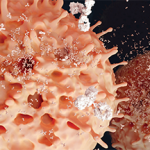Notably, factors related to the strength of a prediction estimate, and type, safety and length of therapy, apply to what an individual may be willing to do for prevention, as well as what investigators and ethical reviewers may be willing to give to an individual. For example, if a predictive model suggests an individual is at ~10% risk for the development of clinically apparent RA within the next 10 years, that individual and investigators/ethical boards may wish only to do lifestyle interventions or very safe drug therapy. Conversely, if a predictive model suggests that an individual has ~80% risk for developing clinically apparent RA within two years, an individual and investigators/ethical boards may be more willing to participate in a drug study with a therapy that may have some risk for adverse effects.
The field will also need to have clear nomenclature to define stages/phases of disease that may benefit from intervention, but perhaps do not yet meet more established classification criteria (e.g., 2010 ACR/EULAR RA Classification criteria). For example, pre-diabetes is a well understood and widely used term used to define a risk period during which interventions may reduce the risk for developing the worse disease of diabetes.28 Efforts to develop terminology that can be applied across the development of RA are not yet widely implemented and may need additional work once the natural history of preclinical RA, and the point at which lifestyle and pharmacologic interventions are best to intervene, are determined.29
The optimal metrics for judging success of an intervention, including measuring when an intervention could be tapered or possibly stopped, are also future aims for research, particularly in the prevention setting, when patients may not have symptoms. Patient-reported outcomes (including digital health), joint examinations and imaging (e.g., ultrasound) may help demonstrate that an individual has not transitioned to classifiable disease. However, blood-based biomarkers may also be highly important to follow to watch inflammation or degrees of autoimmunity—much like cholesterol levels are followed to determine if lifestyle or drug therapy is successful. For RA, such biomarkers could be inflammatory markers or autoantibodies. Although ACPA and RF are not typically followed in individuals who have developed classifiable RA, perhaps in prevention a reduction in autoantibody level or even a reversion to levels below the cutoff value for a positive test may be strong indicators of success. In addition, as advanced imaging, such as ultrasound and magnetic resonance imaging, becomes increasingly available, these modalities may need to be considered in follow-up.


